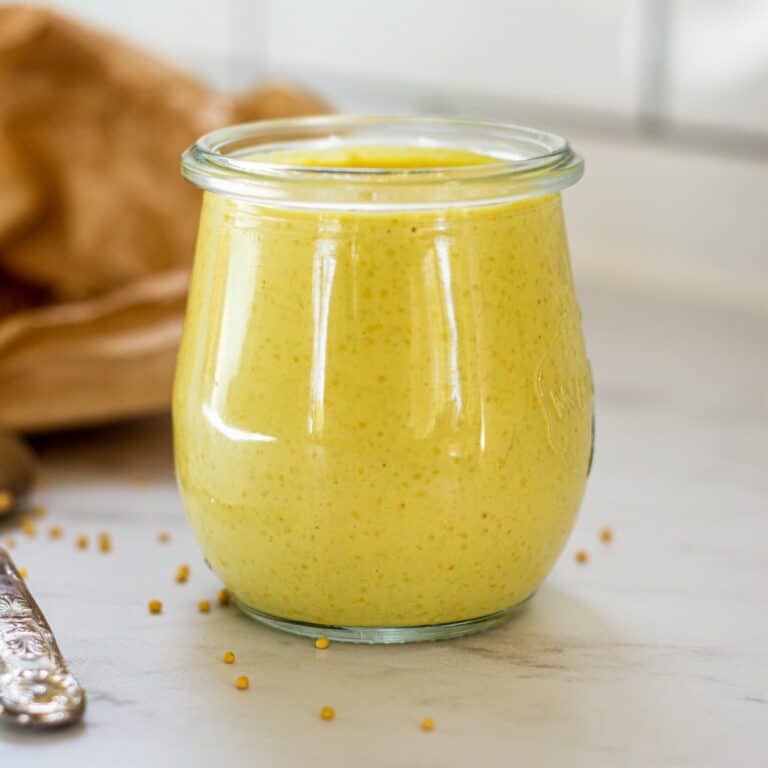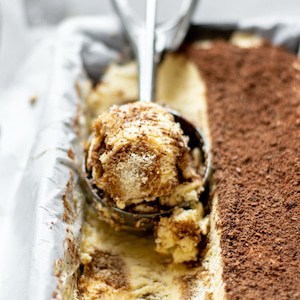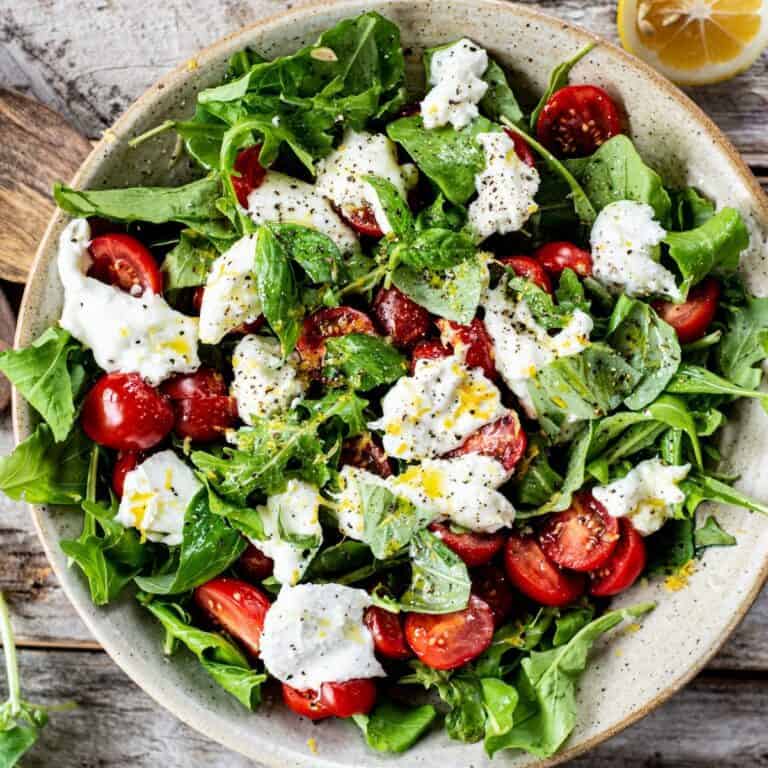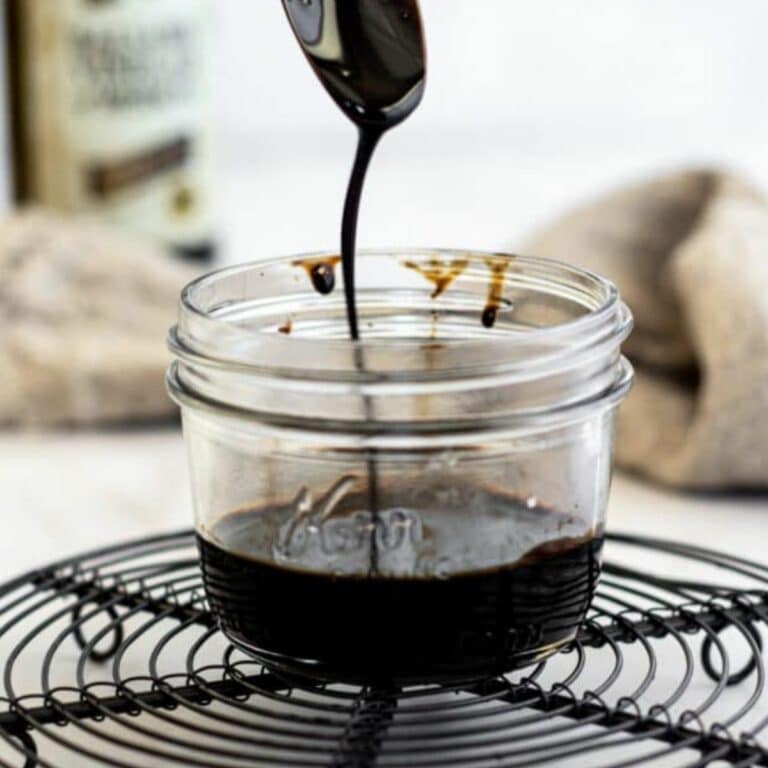Vanilla Custard Doughnuts
These custard doughnuts are pillowy soft and filled with creamy vanilla custard. Homemade doughnuts take a little time to prepare, but it’s worth it!

I love using a yeasted dough when making doughnuts. There is something about the flavor of a risen dough that is much more complex and delicious than other raising agents. The doughnut dough is a simple enriched dough. I’ve got a sourdough doughnut recipe too!
It’s easiest to make in a stand mixer but you can make it by hand too. The filling is a homemade custard recipe that’s gorgeous yellow, rich, and creamy.

Custard and dough ingredients
Here’s what you need for the custard donuts. Find the ingredient quantities written in the printable recipe card at the bottom of this post.
- All-purpose flour. One with a protein level of around 11% which is enough for building dough structure.
- Instant yeast or active dry yeast.
- Granulated white sugar. Adds a little sweetness to the dough.
- Whole milk – For the creamy custard and the doughnut dough.
- Egg yolks and large eggs: Structure and texture in the dough and the base of the custard.
- Unsalted butter: Adds flavor, tender crumb to the doughnuts, and extra richness to the pastry cream.
- Vanilla pod, extract or paste: Use whatever you have!
- Salt
- Cornstarch – To thicken the custard filling.
- Vegetable oil. A neutral type like canola oil or sunflower oil, with a high smoke point, for frying.
Method
Dough
- Add the warm milk and stir in the yeast and sugar to the bowl of a stand mixer fitted with a dough hook. If using active dry yeast, let this sit for 5-10 minutes until foamy.

- Add the egg, flour, and salt to the yeast mixture. Turn the mixer on low speed or use your hands to combine until it forms a sticky, thick dough.

- Mix this dough for around 2 minutes to begin developing the gluten.

- Next, add the room temperature butter, a bit at a time. Turn the mixer on medium speed until the sticky dough strengthens and comes together.
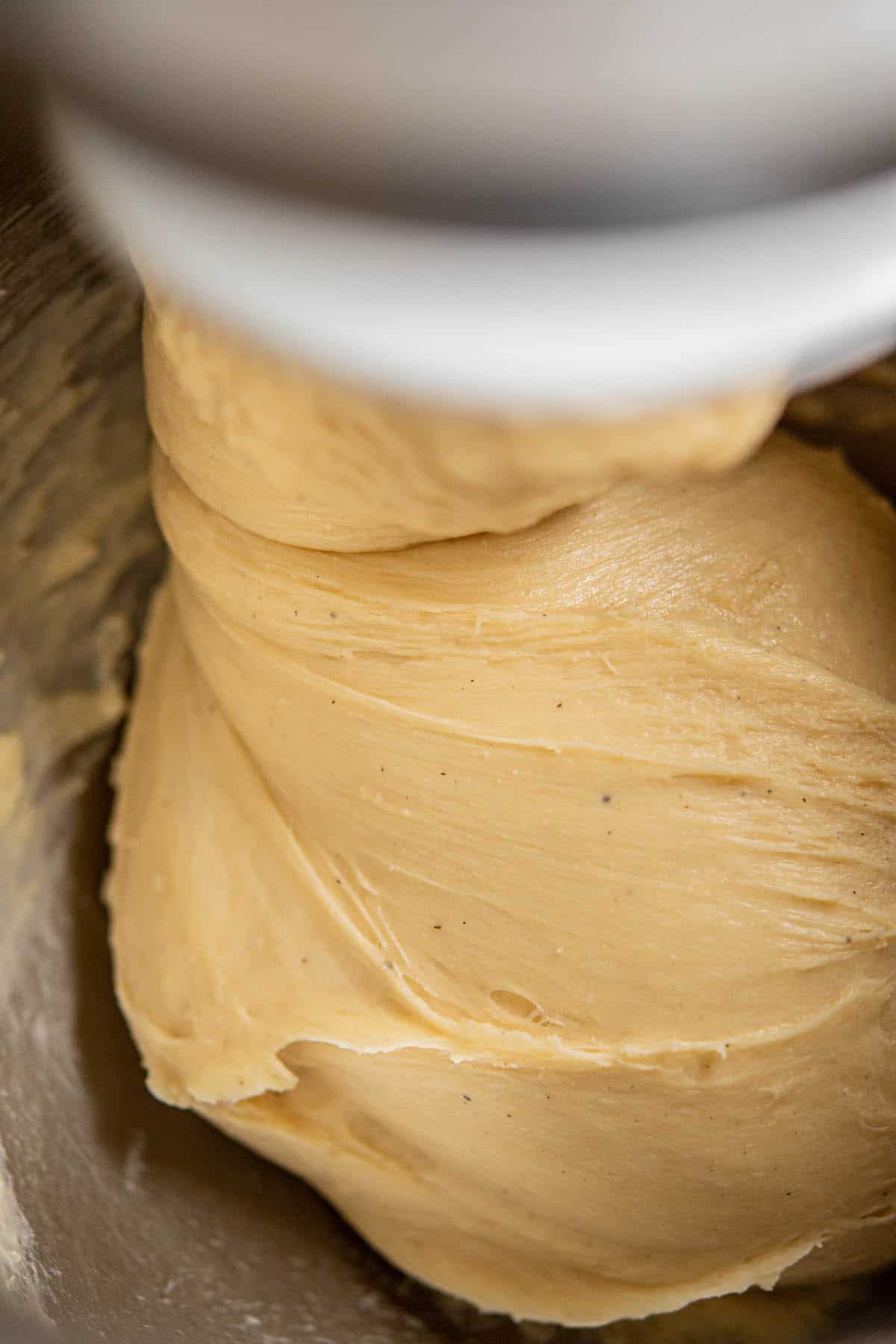
- Mix the dough for at least 10 minutes for the best gluten development. It should pull away cleanly from the sides of the bowl.
- Shape the dough into a ball and place it into a lightly greased bowl. Cover the bowl with plastic wrap and let it proof in a warm spot until doubled in size. You can also proof the dough in the refrigerator overnight for extra flavor. Overnight Option: Let the dough chill overnight in the refrigerator for deeper flavor.
Custard
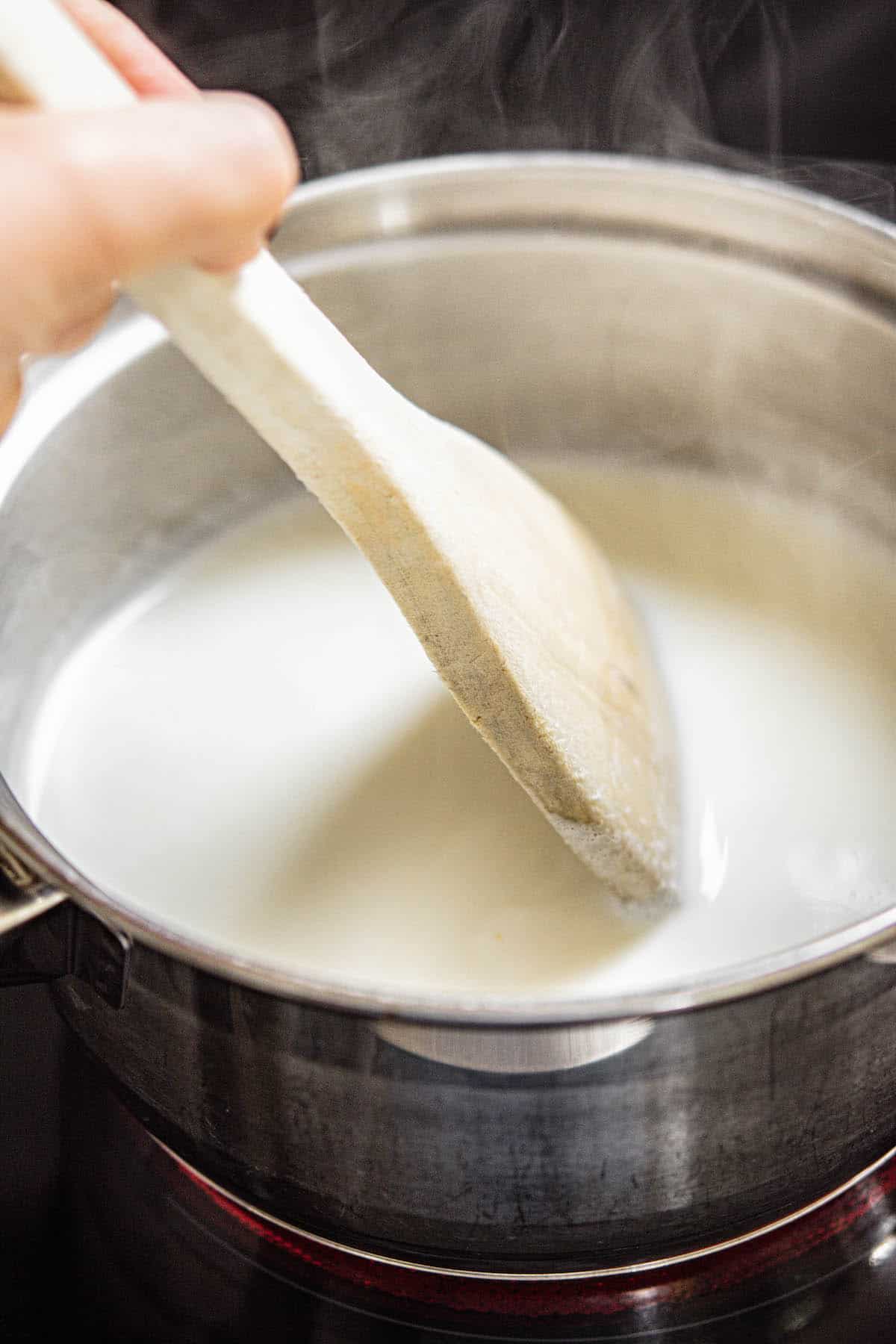
- In a medium saucepan, heat the milk until it is just at a simmer – don’t let it boil.
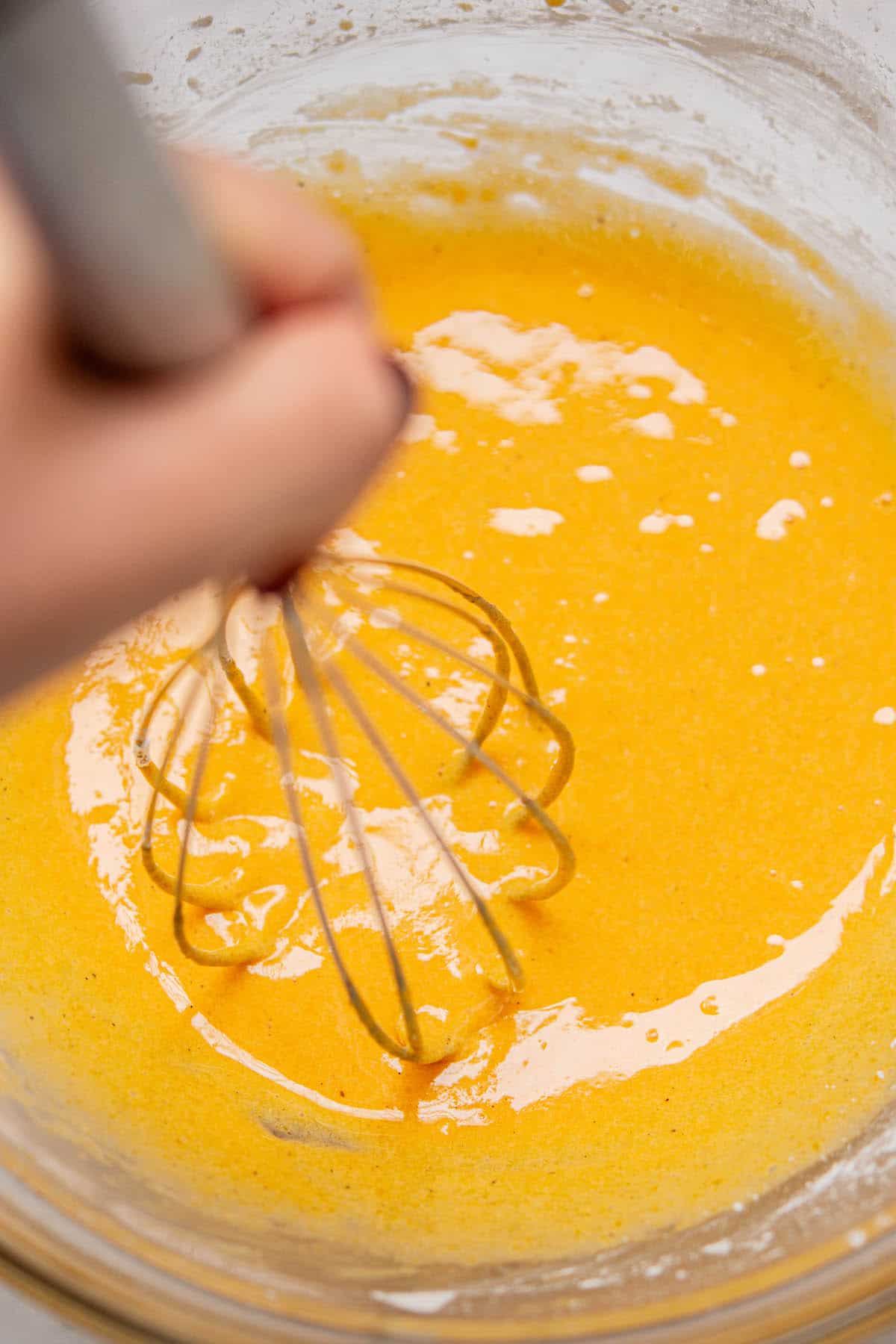
- Whisk egg yolks, sugar, vanilla and cornstarch in a heatproof bowl.
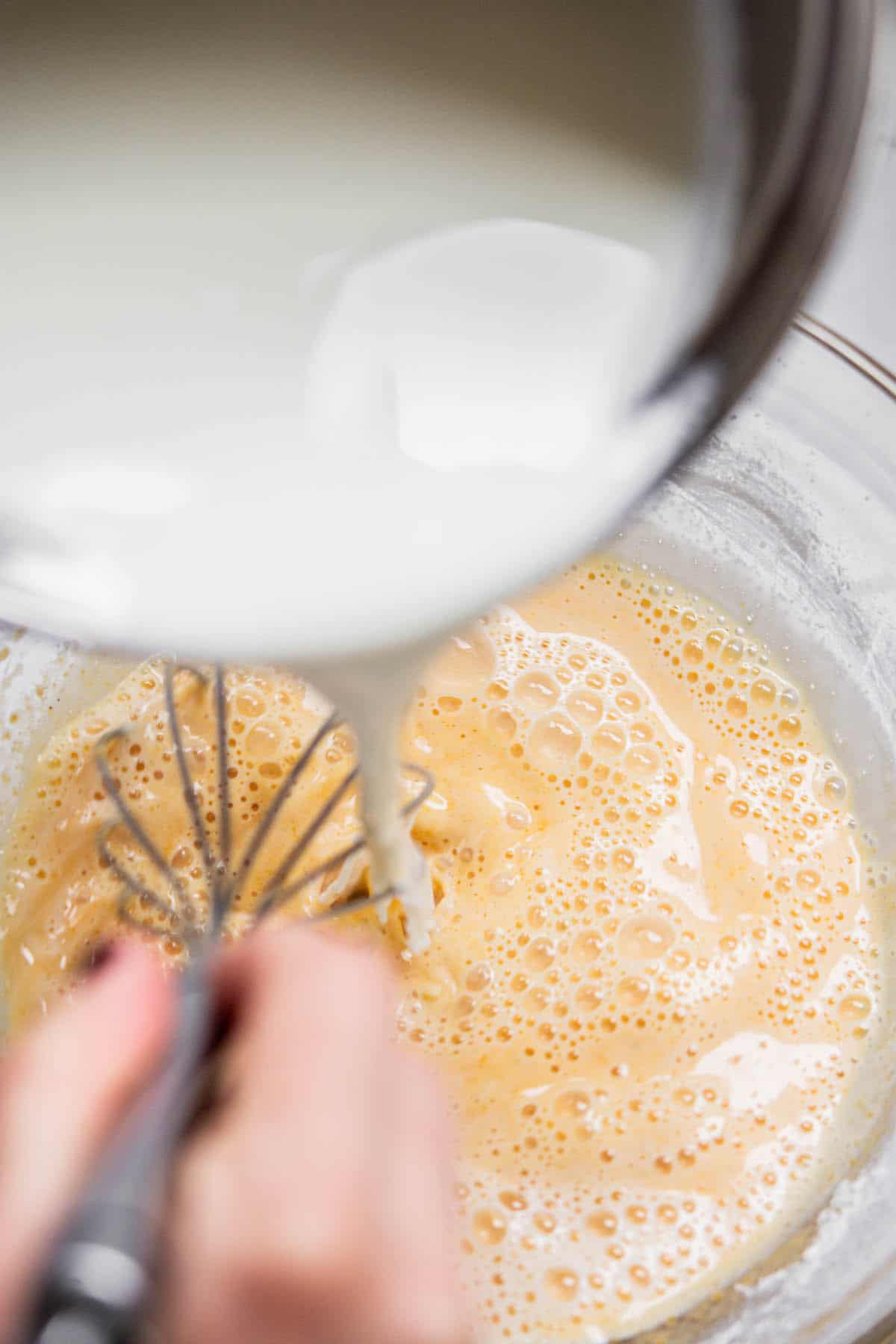
- Gradually add the milk mixture to the egg mixture, whisking constantly. Then return the combined mixture to the saucepan.

- Place over medium heat, whisking constantly until it bubbles. Once it starts bubbling, it will begin to thicken. Keep it at a bubble don’t stop whisking for 1 minute.
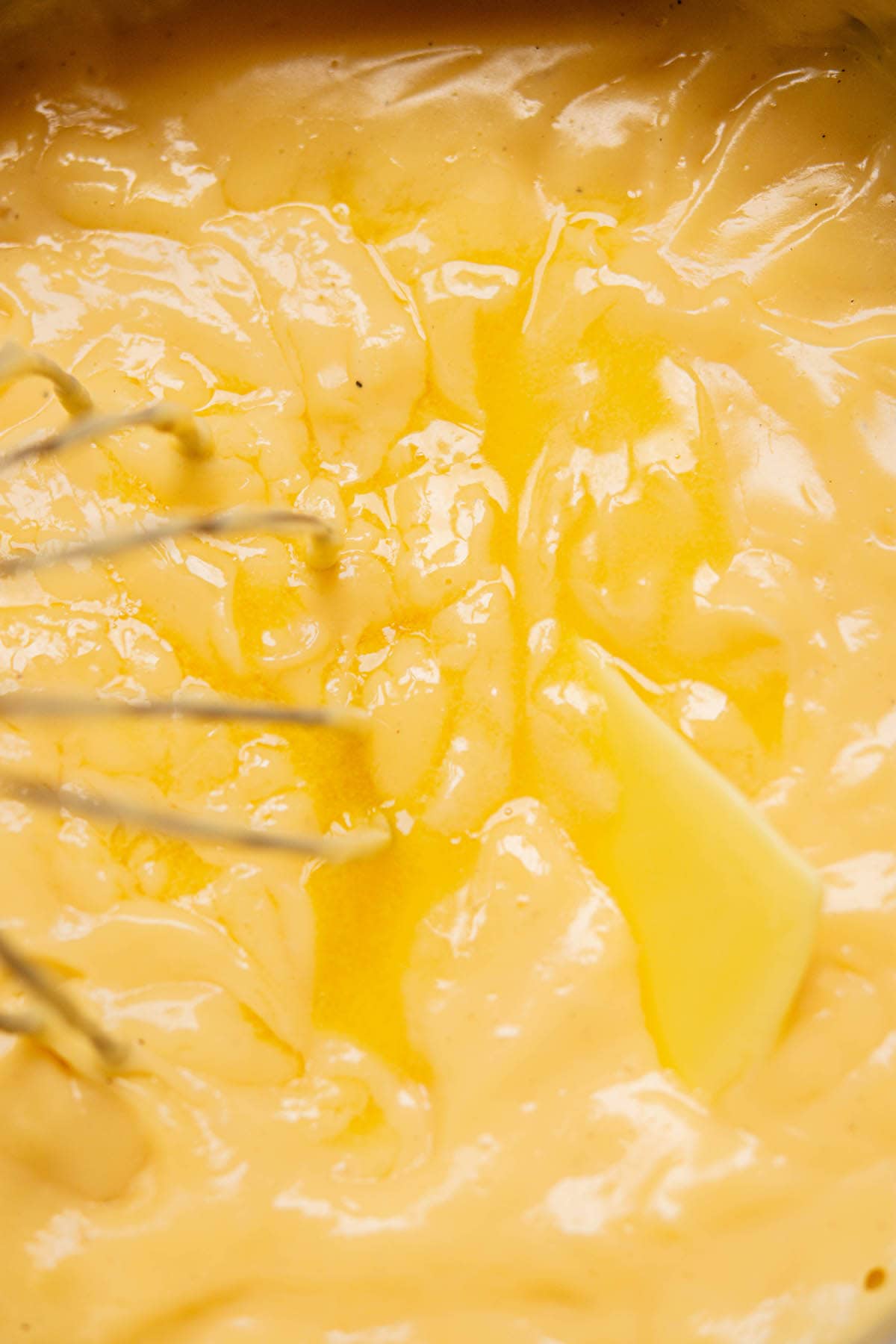
- Take it off the heat and whisk through butter until combined.
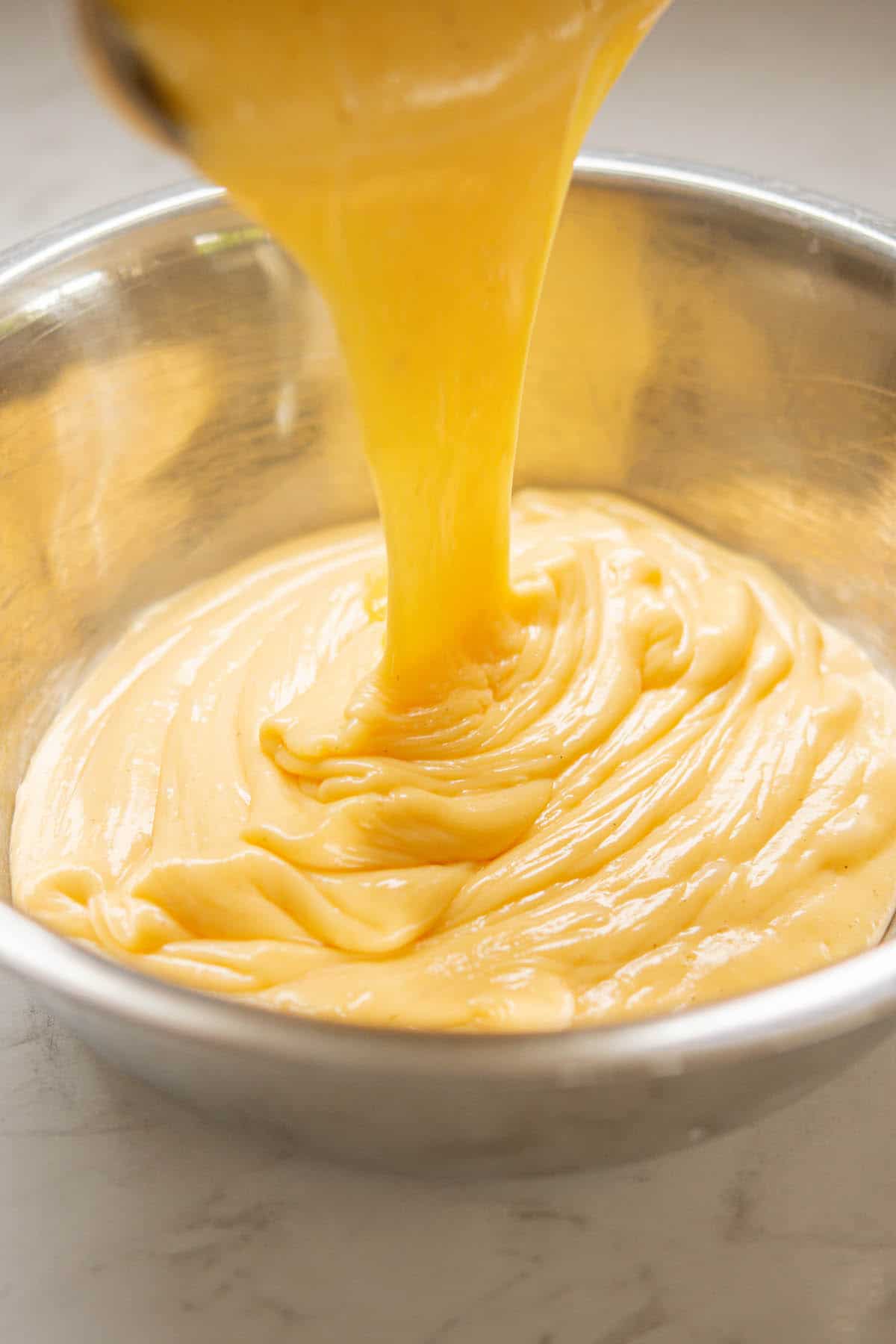
- Pour the hot pastry cream into a clean bowl. If you want an extra silky smooth texture, you can push it through a fine mesh sieve first.
- Lay a piece of plastic wrap directly onto the surface of the custard to avoid skin forming. Let it come to room temperature, then chill it in the refrigerator until completely cold. The pastry cream can be made up to 2 days in advance.
Shaping
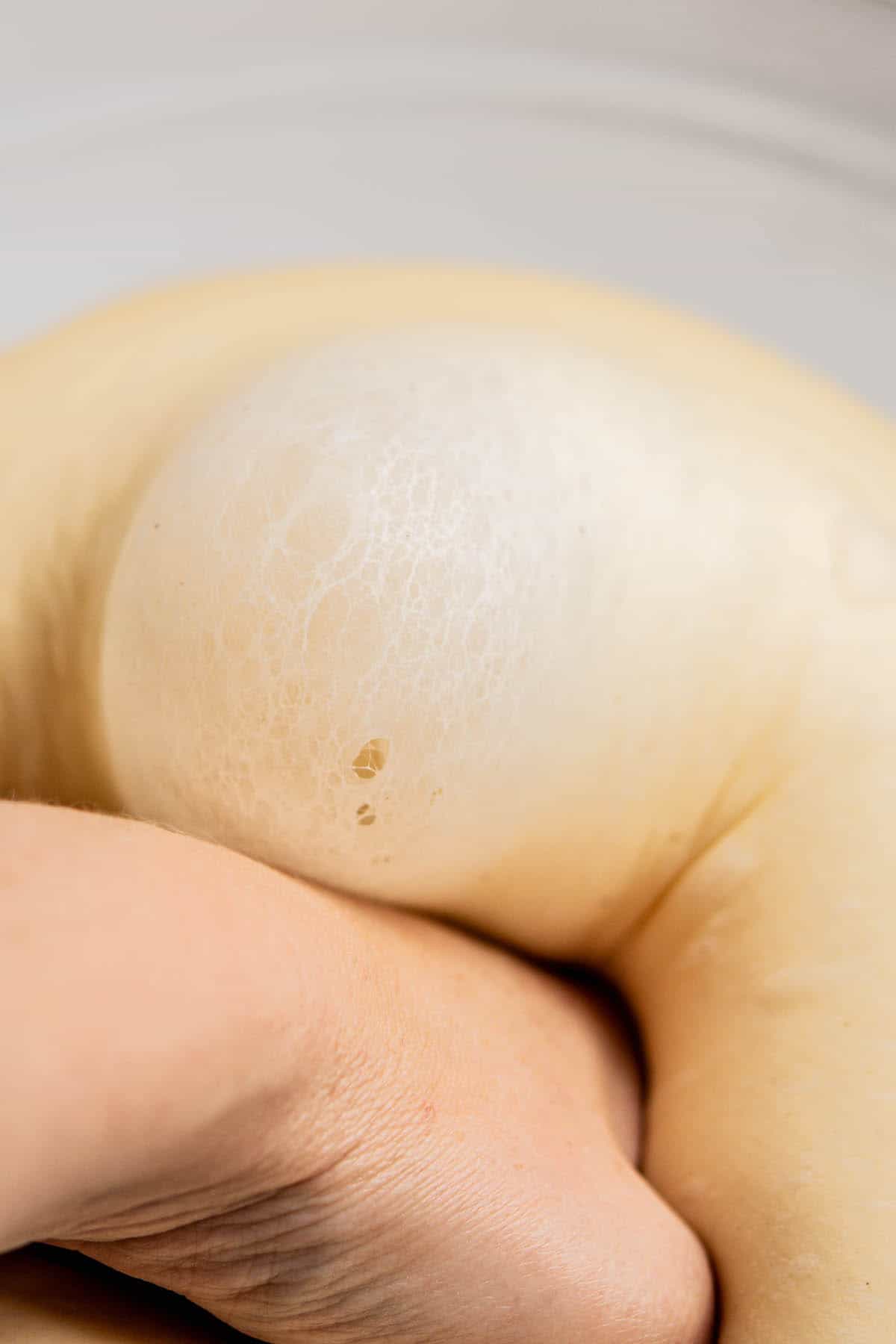
- Punch down the dough and pull it onto a lightly floured surface.
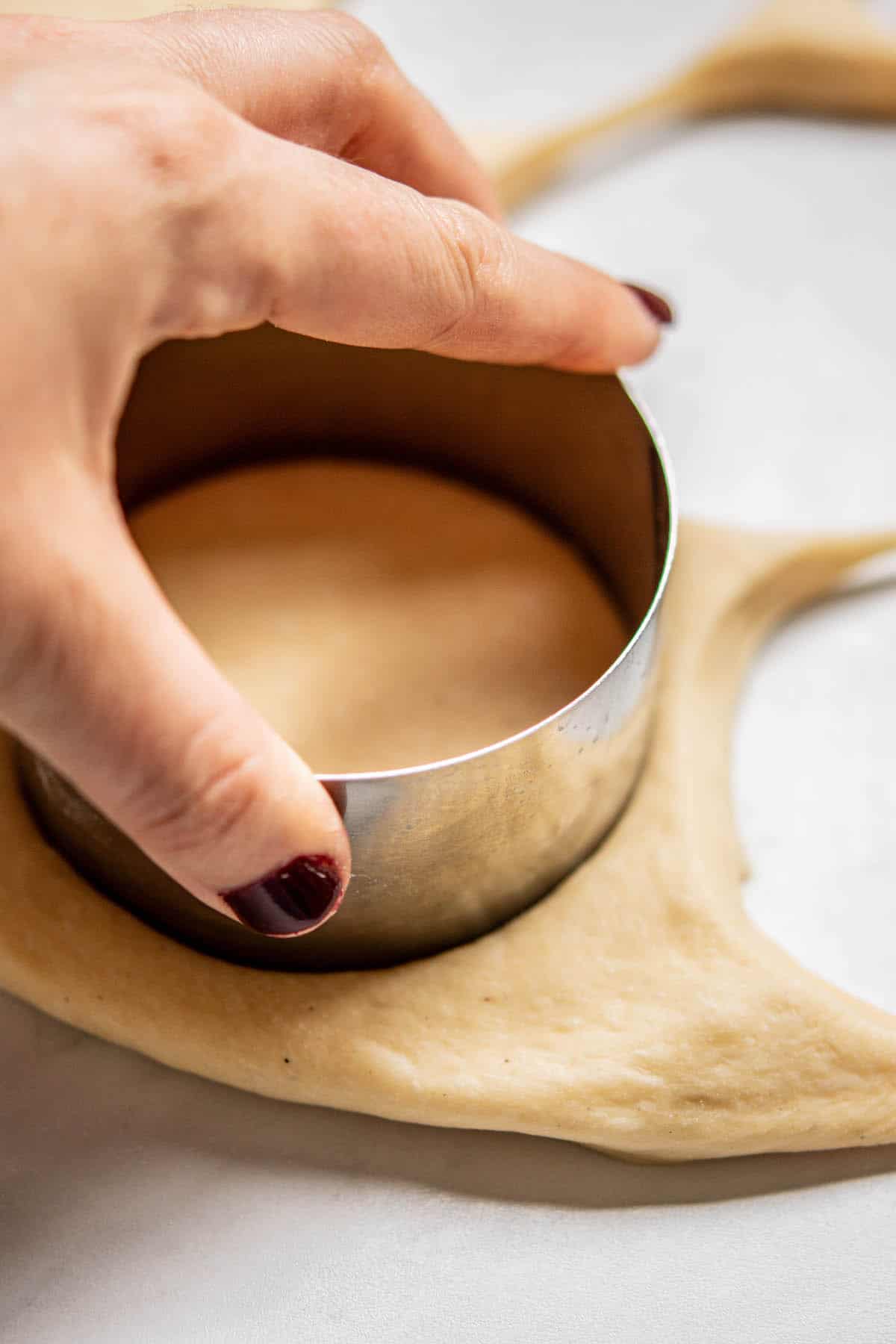
- Roll it into a ½-inch thick rectangle. Use a cookie cutter to cut out 3.5-inch rounds, placing each on parchment paper. Knead any scraps into a ball, rest, then roll again.
- Let cut doughnuts rest for 30-60 minutes until puffy, cutting around the parchment paper with kitchen scissors so each doughnut is on a separate piece.
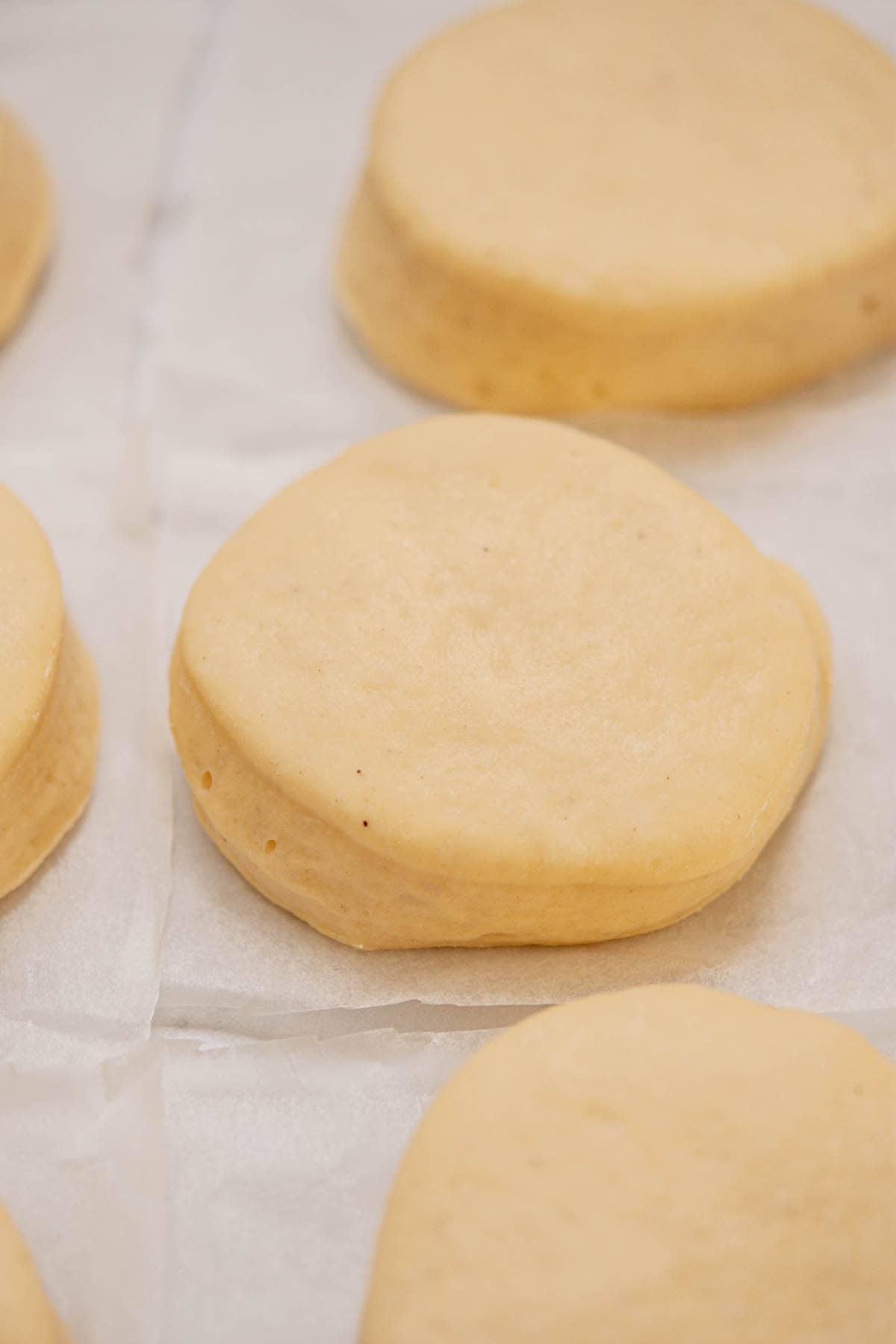
Deep Frying
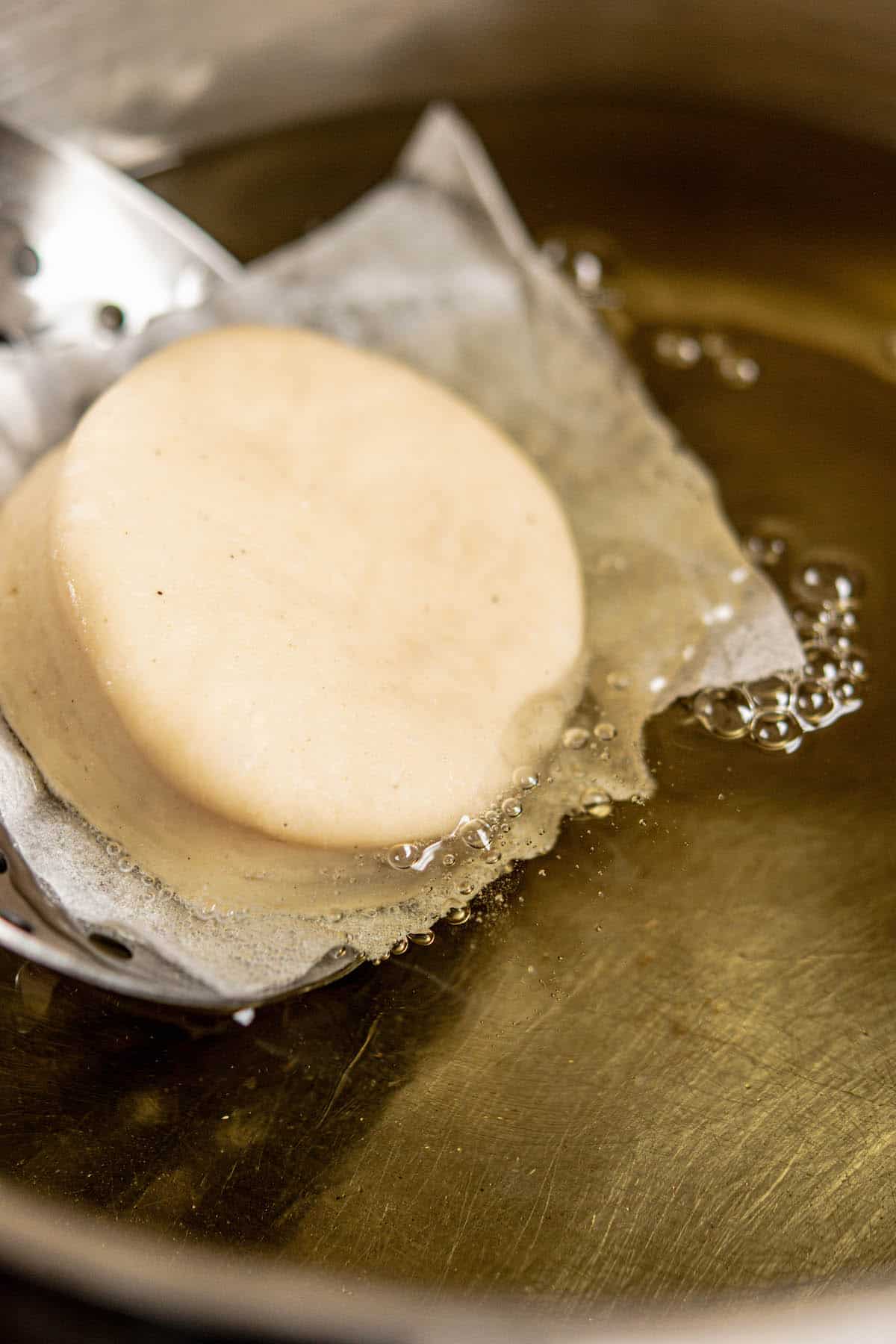
- Heat around 3 inches of oil in a deep fryer or deep saucepan to 340°F – 347°F. Carefully add in 2-3 doughnuts into the hot oil, removing parchment with tongs.
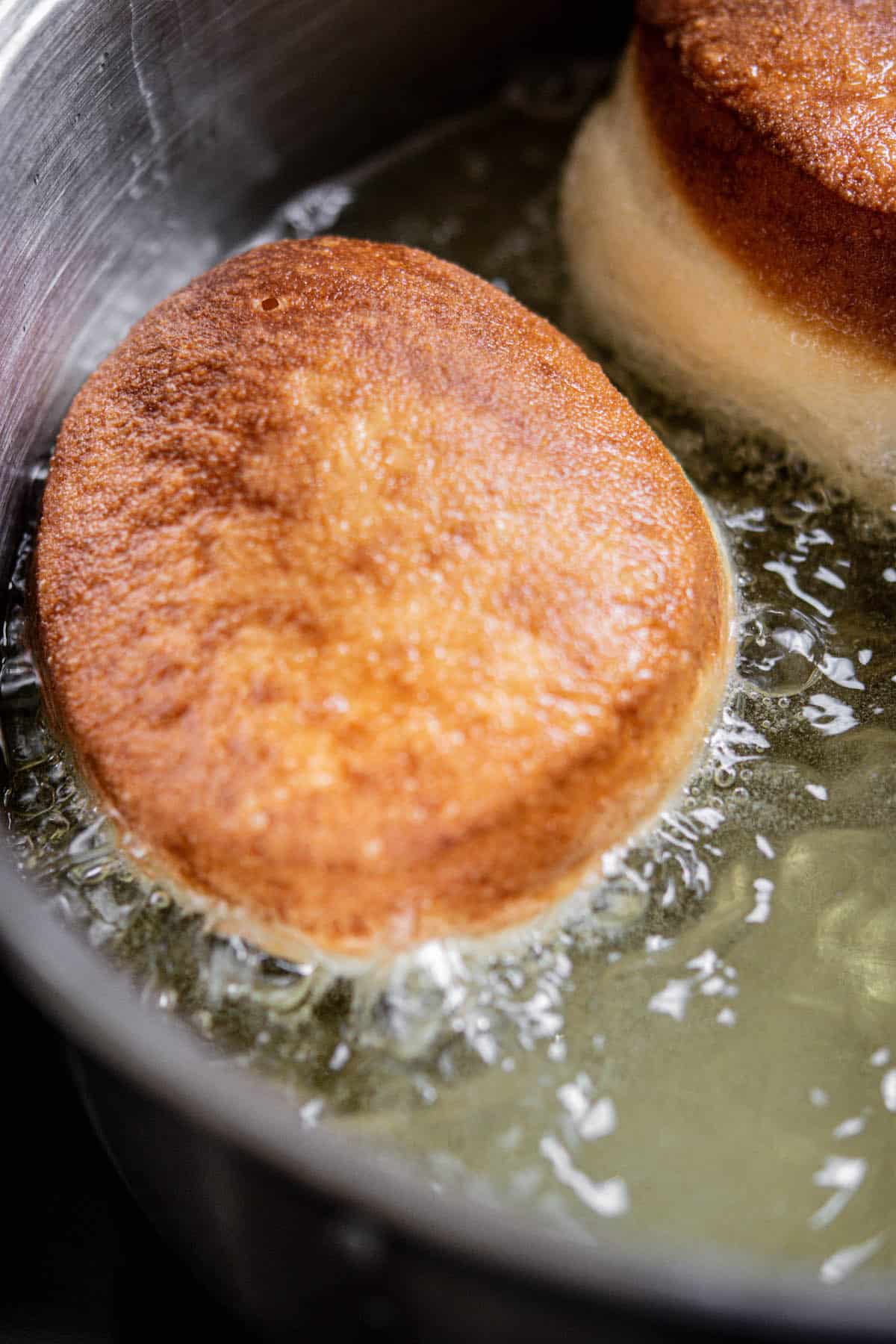
- Fry for 2 minutes until deep golden brown, flip, and fry for another 2 minutes. Keep oil hot but under 350°F.

- Remove the fried donuts with a slotted spoon, then place them on a wire rack to cool and continue frying the rest of the donuts.

- Once cooled, toss the doughnuts in a seperate bowl of granulated or caster sugar to coat.
Filling
- Give the cold custard a whisk to loosen it up, then spoon it into a piping bag with a round tip. Insert the tip of a small knife into the sides of the cooled doughnuts to make a hole for the filling. Pipe the custard through the hole into each donut.
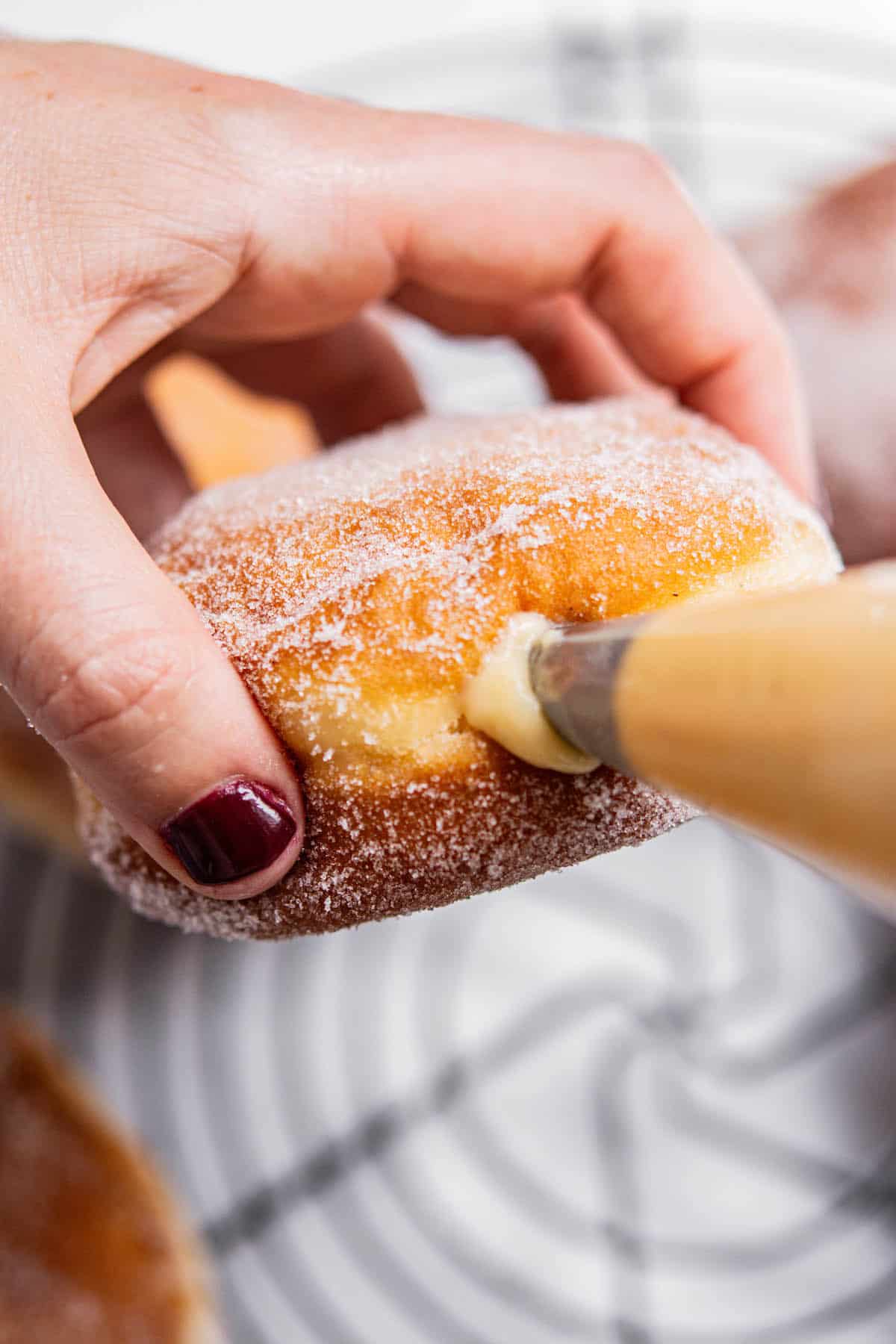
Storing
Once filled, custard doughnuts are best served on the day they are made. Store any leftover custard doughnuts in an airtight container in the refrigerator.
FAQS
Though you could, the flavor comes from the deep frying. If you bake them they will resemble brioche buns, not doughnuts.
Custard-filled doughnuts are best enjoyed fresh, ideally within a few hours of making them. If you need to store them, keep them in an airtight container in the fridge for up to 24 hours.
I don’t recommend freezing these.

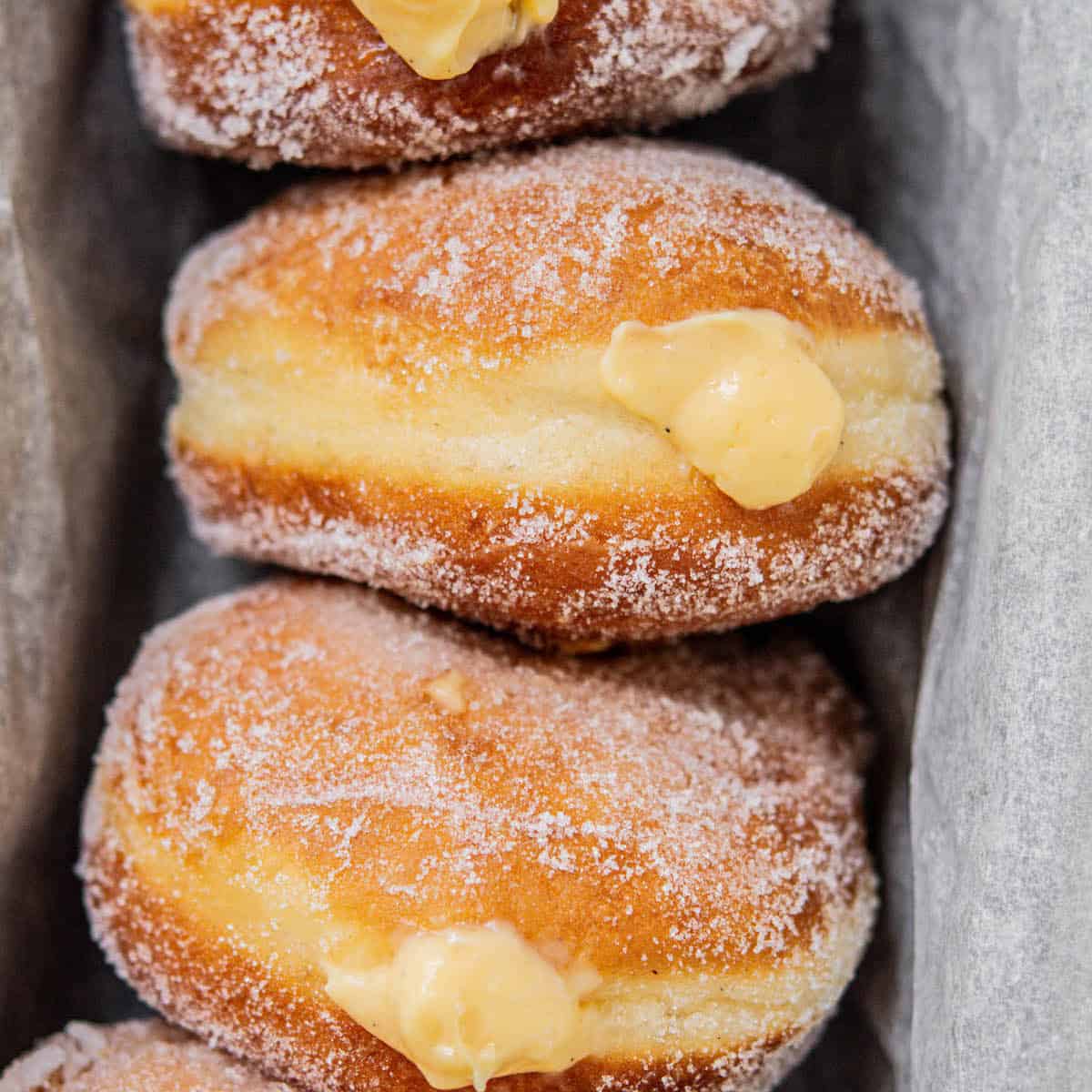
Vanilla Custard Doughnuts
These custard doughnuts are pillowy, soft, and filled with creamy vanilla custard. Homemade doughnuts take a little time to prepare, but it's worth it!
Ingredients
Doughnut dough
- 1 ½ teaspoons instant yeast or active dried yeast
- 25g (2 Tablespoons) granulated sugar
- 240g (1 cup) luke-warm milk
- 405g (3 ¼ cups*) all-purpose flour
- 1 large egg
- 1 teaspoon vanilla bean paste or extract
- ¾ teaspoon salt
- 42g (3 Tablespoons) unsalted butter, softened
Custard
- 480g (2 cups) whole milk
- 1 vanilla bean or 2 teaspoons vanilla paste or extract
- 65 g (1/3 cup) granulated sugar
- 30 g (1/4 cup) cornstarch
- 4 large egg yolks
- ¼ teaspoon salt
- 45 g ( 3 Tablespoons) unsalted butter
Frying
- 1-2 liters/quarts neutral oil - enough to fill the pot around 3" deep.
Coating
- Caster sugar or granulated sugar
Instructions
Doughnut dough
- Add the warm milk and stir in the yeast and sugar to the bowl of a stand mixer fitted with a dough hook. If using active dry yeast, let this sit for 5-10 minutes until foamy.
- Add the egg, flour, and salt to the milk mixture. Turn the mixer on low speed or use your hands to combine until it forms a sticky, thick dough. Mix this dough for around 2 minutes to begin developing the gluten.
- Add the room-temperature butter. Turn the mixer on medium speed until the sticky dough strengthens and comes together. In the mixer, it should pull away cleanly from the sides of the bowl. Mix the dough for at least 10 minutes for the best gluten development. The dough should feel smooth, soft, and strong.
- Shape the dough into a ball and place it into a lightly greased large bowl. Cover the bowl with plastic wrap and let it proof in a warm spot until doubled in size. You can also proof the dough in the refrigerator overnight for extra flavor.
Custard
- In a medium saucepan, heat the milk until it is just at a simmer - don't let it boil.
- While the milk is warming, add the egg yolks, sugar, salt, vanilla, and cornstarch in a separate bowl until smooth
- Place the bowl on a dampened kitchen towel to prevent slipping. Add the hot milk mixture to the egg mixture in a steady stream while whisking.
- Return the combined mixture to the saucepan over medium heat, whisking constantly until it bubbles. Once it starts bubbling, it will begin to thicken. Keep it at a bubble don't stop whisking for 1 minute.
- Take it off the heat and whisk in the butter until thoroughly combined. Pour the hot pastry cream into a clean bowl. If you want an extra silky smooth texture, you can push it through a fine mesh sieve first
- Lay a piece of plastic wrap directly onto the surface of the custard to avoid a skin forming. Let it come to room temperature, then chill it in the refrigerator until completely cold.
Shaping and frying
- Punch down the dough and pull it from the bowl onto a lightly floured surface. If it is refrigerated, it will be stiff. Form it into a mound and lightly flour the top. Then roll it into a ½ inch/ 1.3cm thick rectangle.
- Use a cookie cutter or jar lid to cut out round donuts about 3.5 inches/9 cm in diameter. Place each cut donut onto some parchment paper.
- Any dough scraps can be kneaded back into a ball and rolled out again. Leave the dough scraps to rest for a few minutes before rolling out again. This allows the gluten to rest again so the dough doesn't spring back when rolled.
- Let the donuts rest for 30-60 minutes until they are puffy. If drying out, lightly brush the tops with a bit of water. Use kitchen scissors to cut around each donut on the parchment paper so each donut sits on its piece.
- When nearly ready to fry, pour the frying oil into a deep fryer or a deep pot and heat it to around 340°F / 171°C - 347°F / 175°C. Fill a shallow bowl with caster sugar.
- Carefully drop 1-2 donuts into the oil and remove the parchment paper with tongs. Fry the donuts for 2 minutes on one side, flip them, and fry for 2 minutes on the other.
- Ensure the oil in the pot stays hot, but don't let it surpass 350°F / 177°C, or the donuts will burn before they can cook in the middle.
- Remove the fried donuts with a slotted spoon, let them cool on a wire rack, and continue frying the rest. Once cooled, toss the doughnuts in a seperate bowl of granulated or caster sugar to coat.
Filling
- Give the cold custard a whisk to loosen it up, then spoon it into a piping bag with a round tip. Insert the tip of a small knife into the sides of the cooled doughnuts to make a hole for the filling. Pipe the custard through the hole into each donut.
Once filled, custard doughnuts are best served on the day they are made. Store any leftover custard doughnuts in an airtight container in the refrigerator.
Notes
*The cup sizes given are US sizes, note that these are smaller than metric. For best results use grams.
Nutrition Information:
Serving Size: 1Amount Per Serving: Calories: 266Total Fat: 12gSaturated Fat: 6gCarbohydrates: 35gSugar: 8gProtein: 4g
